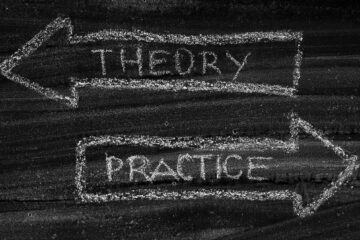Cross-posted from Education Week
Three years ago, the OECD asked our organization to help them prepare what has turned out to be the first in a series of reports, Strong Performers and Successful Reformers in Education: Lessons From PISA for the United States. We began that report by offering a hypothesis as to why some countries are more successful than others at producing both high equity and high student performance in their education systems.
At the heart of that hypothesis was an idea whose origins go back to Peter Drucker, the famous management analyst. In a book called The Age of Discontinuity, published in 1969, Drucker advanced the notion that the future, for both countries and companies, belonged to knowledge work and knowledge workers.
Knowledge workers, Drucker said, needed a very different work environment than blue-collar workers. Most important, whereas blue-collar workers were content to be told what to do by management, knowledge workers expected to have a great deal of autonomy, participating at a high level in the decisions about how available resources were going to be used and how the work was going to get done. In the world of knowledge work and knowledge workers, a world in which most of the really important decisions were made by the workers themselves, and the rewards to each were dependent on the work of all, the primary line of accountability would not be upwards to supervisors but sideways to colleagues. That would not, however, mean that accountability would be dead. After all, most professionals can be sued for failing to observe the standards of professional practice. Knowledge workers were quite prepared to be held accountable, not for doing what they were told, but for doing what the profession itself said was truly professional work, as long as they had the autonomy they needed to make professional decisions about how the work was to be done. Those who succeeded would be those who worked hard and were constantly improving their practice.
Drucker’s book spelled the end of Taylorism in much of the corporate world. But that could hardly be said for schools. When we looked at the world’s most successful education systems, we thought we saw a strong correlation between the degree to which countries embraced forms of work organization based on Drucker’s ideas and high student performance. What we thought what we were looking at was a very strong embrace of a far more professional conception of the school as a workplace in the countries with the strongest performance.
But we were just offering an impression. We had no concrete evidence to offer apart from our field notes from countless visits to a wide variety of countries over the course of a couple of decades. We do now, though.
Toward the end of the slide deck that Andreas Schleicher is using to describe the findings of the 2012 PISA survey you will find a series of slides that are new, that have no analogues in previous reports of the PISA data. Those slides confirm our impressions with data.
First the slides conclude that the data show that, “Schools with more autonomy over curricula and assessments tend to perform better than schools with less autonomy, where they are part of school systems with more accountability arrangements and greater teacher-principal collaboration in school management.” In other words, on balance schools will perform better when they have more autonomy from the larger system of which they are a part, but only if the school faculty participates in the decisions to be made. The data also show that we see the gains we want not just when the faculty has a major role in making the important decisions, but when the school is also held accountable for the results. This finding is referring to environments in which school performance against national or state metrics is broadly shared not just within the professional education community, but with the entire community.
Second, the data show that, “Schools with more autonomy with respect to resource allocation perform better than schools with less autonomy in systems with more collaboration.” And, “Schools with more autonomy perform better than schools with less autonomy in systems with standardized math policies.” This round of PISA focused on mathematics.
So we only see the gains we are looking for when the state has been clear about the goals, the results we want for students and the measures we will use to determine whether those goals have been achieved. The PISA data makes it clear that, when those goals, desired results and measures have not been put in place by the state, we cannot expect to see gains for the students when we grant more autonomy to the teachers.
The data also show that the professional, knowledge-worker model will not work when teachers are paid blue-collar wages. “Among high income countries, high performers pay teachers more.”
Finally, Schleicher makes it clear that autonomy in decision-making for school faculty with respect to curriculum, assessment and use of school resources is not to be confused with school choice. He reports that the data show, “…there is no relationship between the prevalence of competition and overall performance level.”
One final point. Though this set of slides does not include an analysis of the relationship between teacher quality, faculty autonomy and student achievement, other OECD data and analysis shows a very strong relationship between teacher quality and student performance.
So, there is now plenty of evidence that, for all the reasons Drucker enumerated, the people who run our state education systems must not only go after highly qualified teachers, they must at the same time pay them well and make fundamental changes in the work organization of schools both to attract the people they want and to enable them to do their best work.





